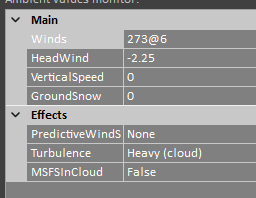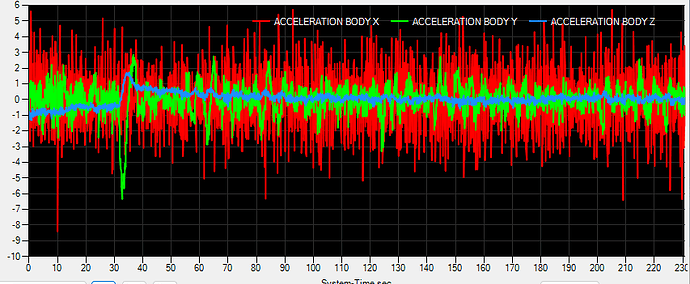Here is a graph I made, watching acceleration on all three axes, in, and out of storm clouds, and toggling ASFS Passive mode on, and off by turning the program on, and off. I cannot see a difference.
The blips around 35 seconds in are me engaging the AP on to heading, and altitude hold mode. I really can’t see a difference in how the plane is moving either, viewing it from the outside.
MSFS turbulence is set to realistic, and realism is enabled in ASFS.
Going to do a quick switch to ASFS preset mode for comparisons sake.

The red hump is where I adjusted my heading to head into a very dark cloud.
It’s going to vary from storm to storm, but it didn’t feel very energetic to me. I have seen 2000fpm updraughts before though, and I only saw about 200fpm here.
Just noticed that although I had turbulence set to 100%, turbulence scale was at 50%. Let’s set that to 100%, slew back before the cloud, and fly through it again.
Now we’re talking. Very easy to spot the none to CAT before I enter, and leave the storm cloud.
The biggest difference here is that Asobo live doesn’t seem to discriminate between being inside a cloud or not. You get that really aggressive pattern all the time.
I’ve tested Asobo live weather like this before, and where some users reported that there was no turbulence in clouds, there is infact very little. A small difference, but hardly noticeable unless you graph it. Whereas ASFS shows clear differences.
The graph shows a predominantly Y axis change i.e. up or down, with very little on the other axes, but I wonder if those would change along with a heading change, altering the direction the wind is coming from in relation to the plane heading.


